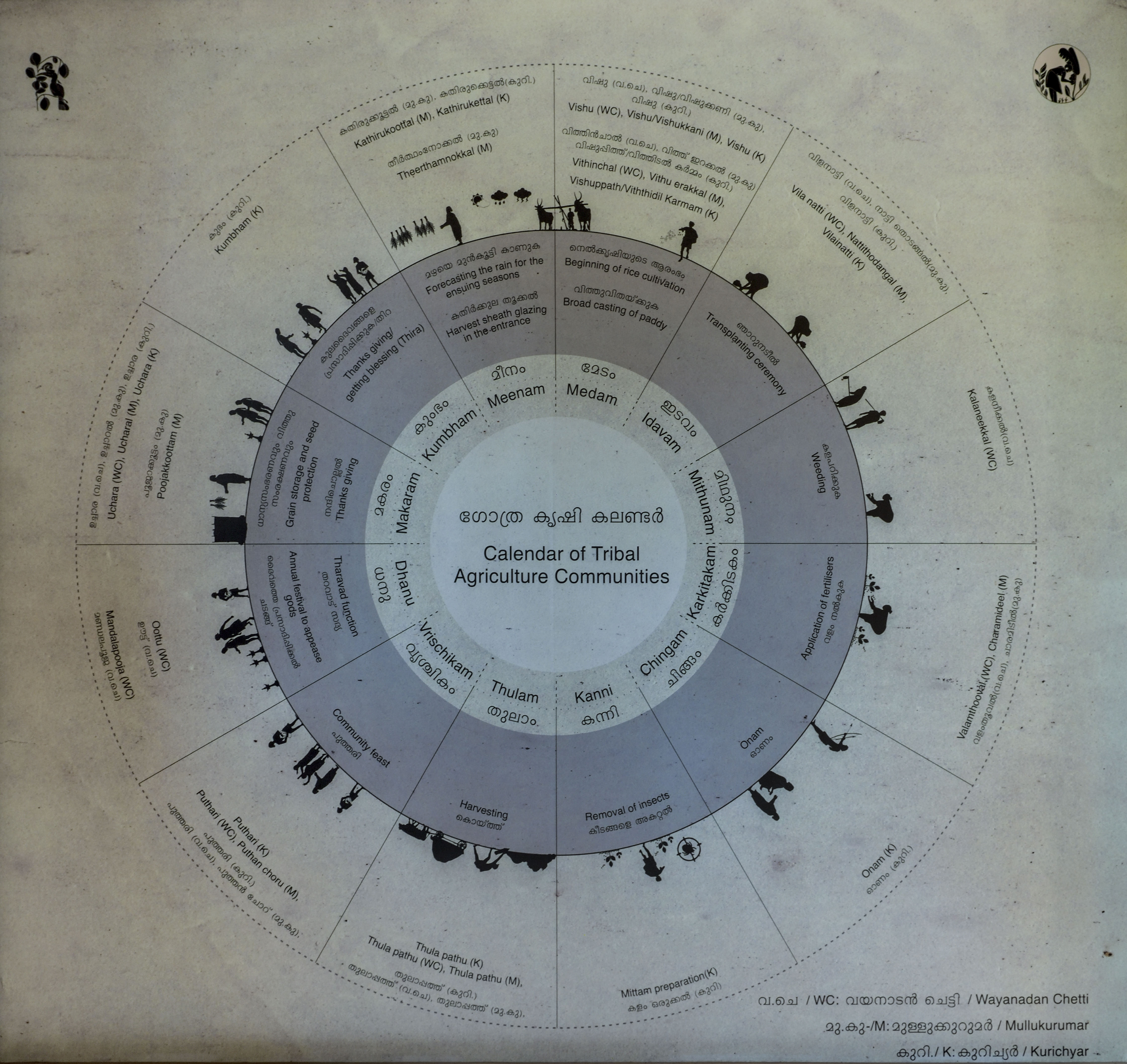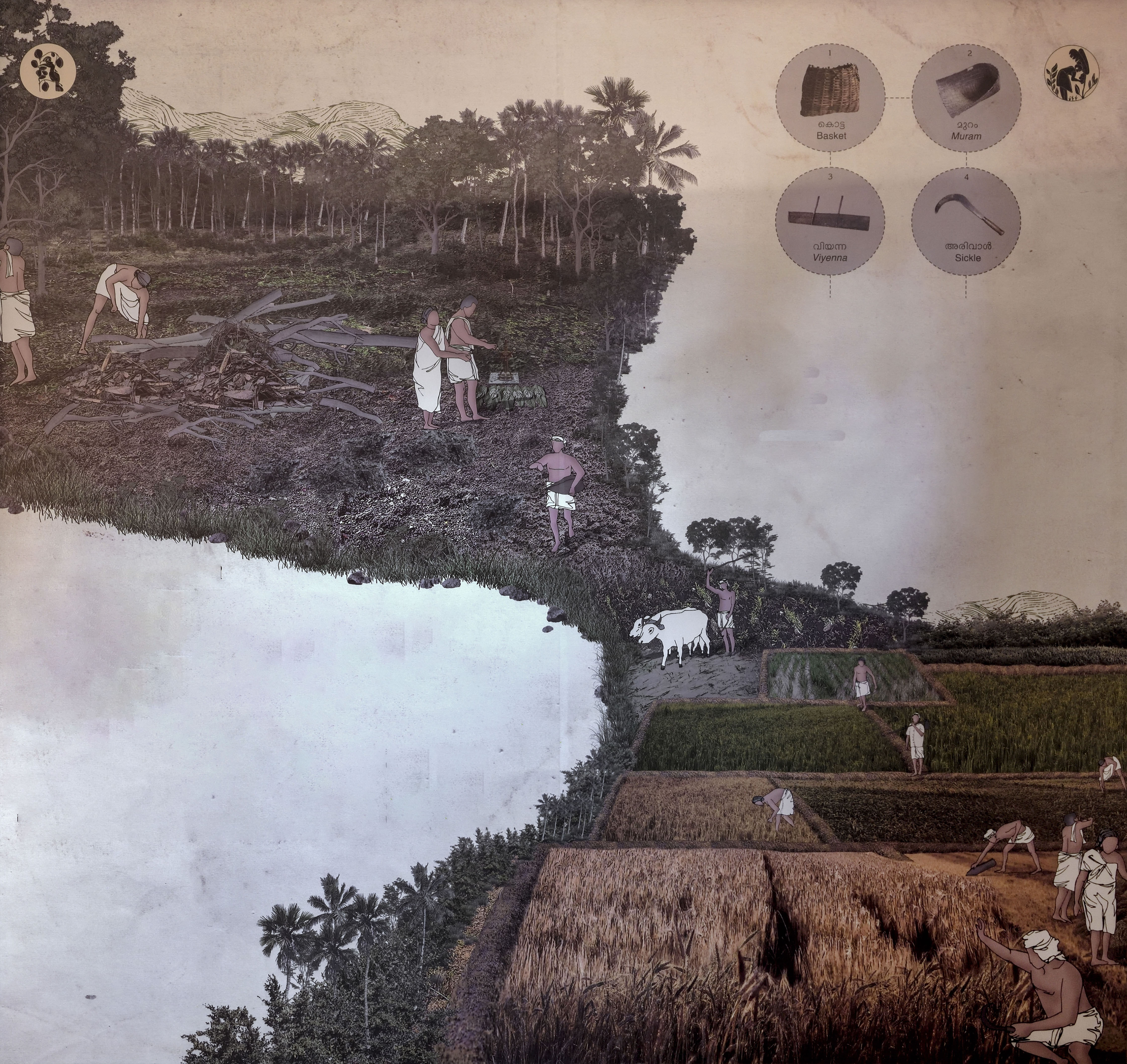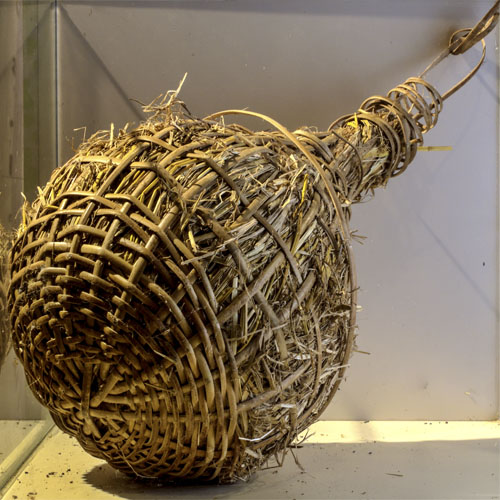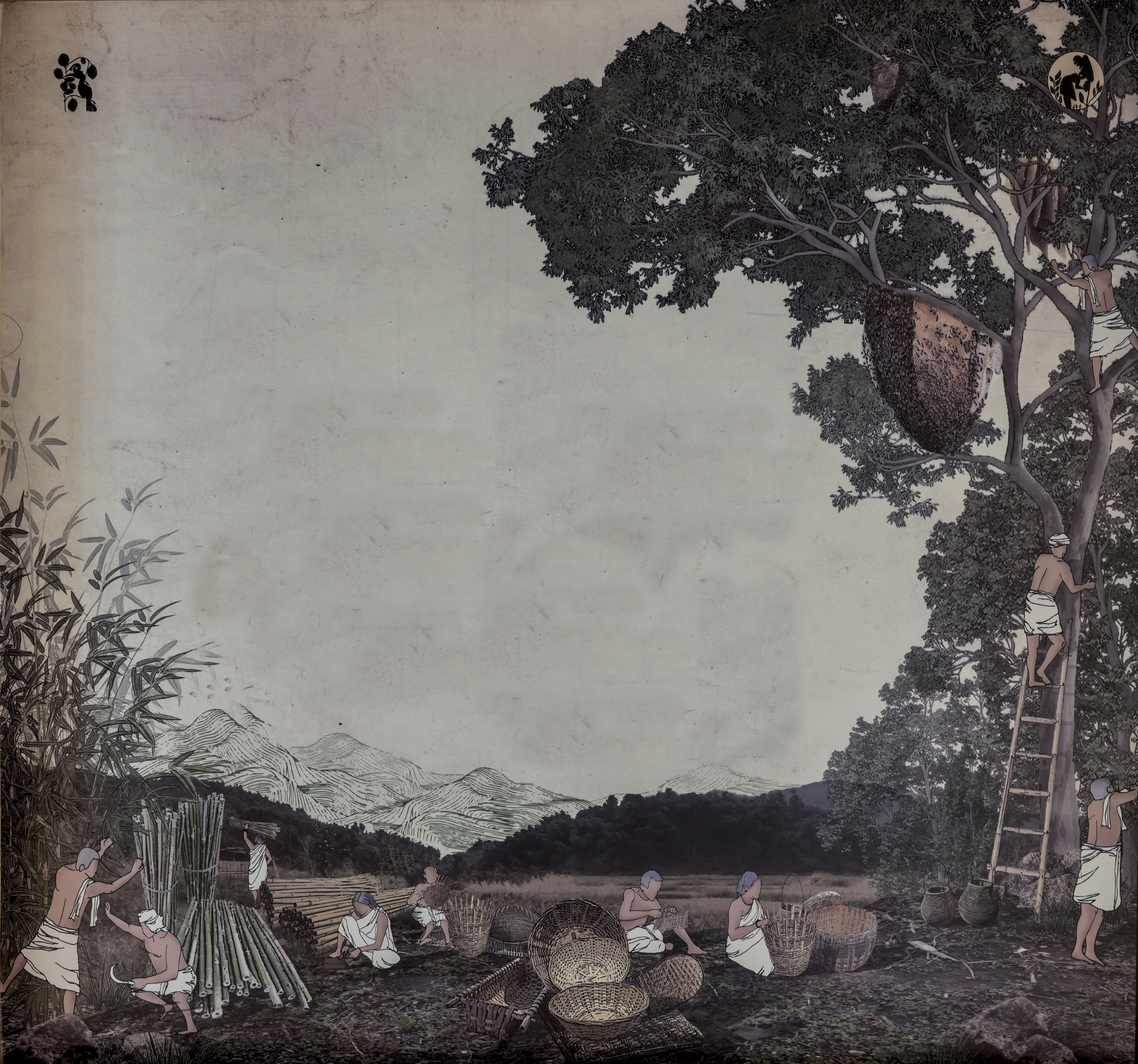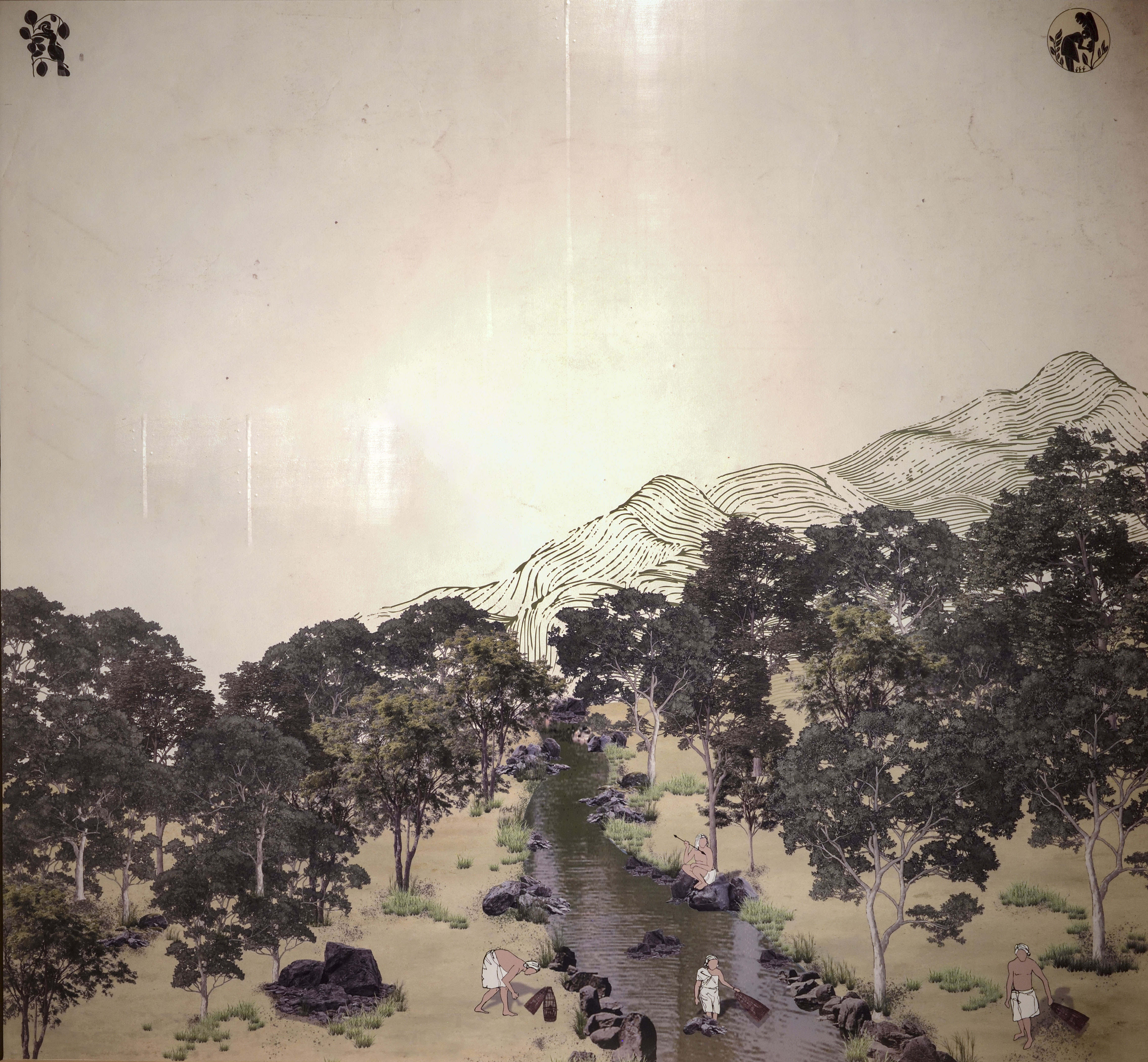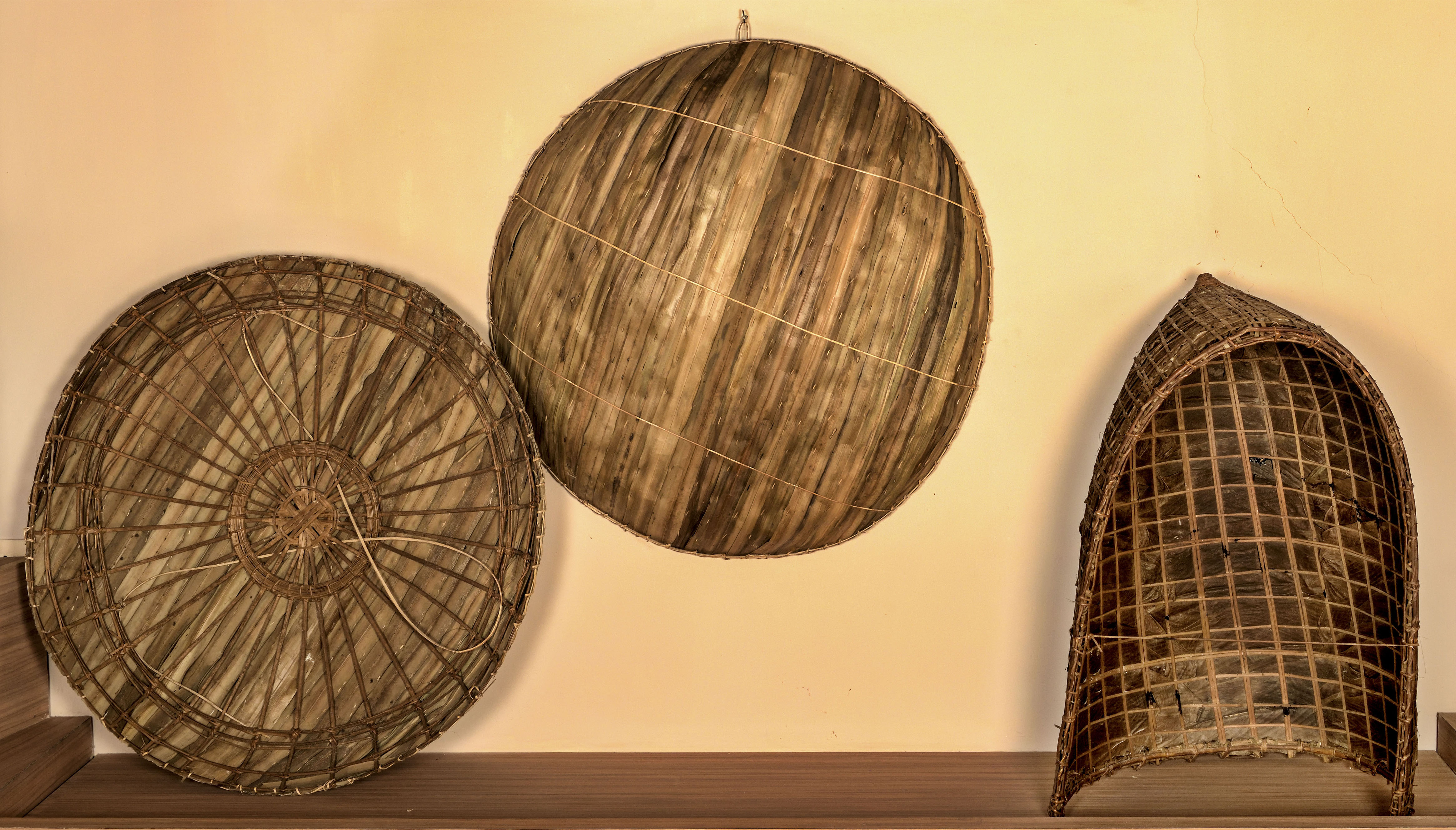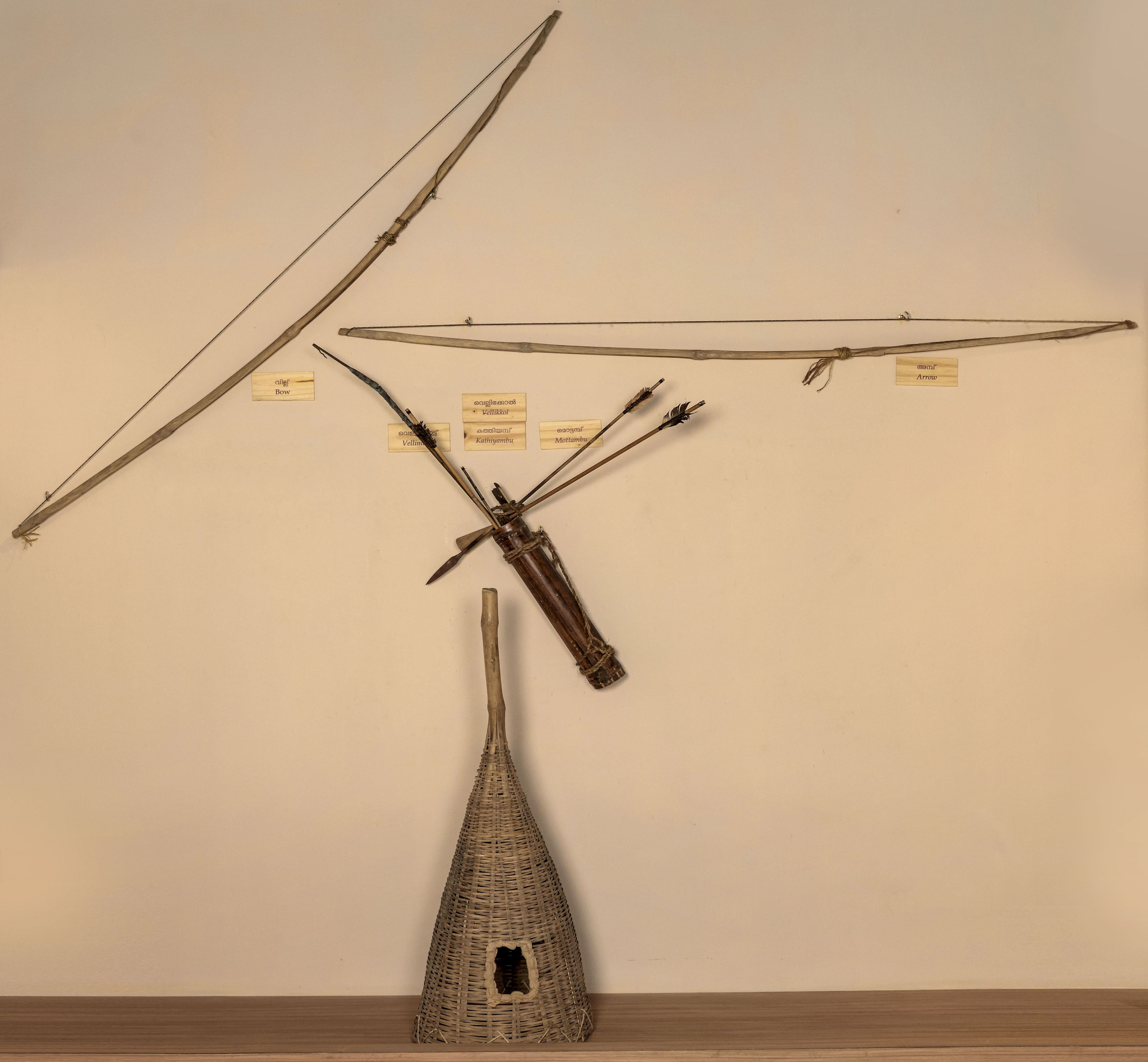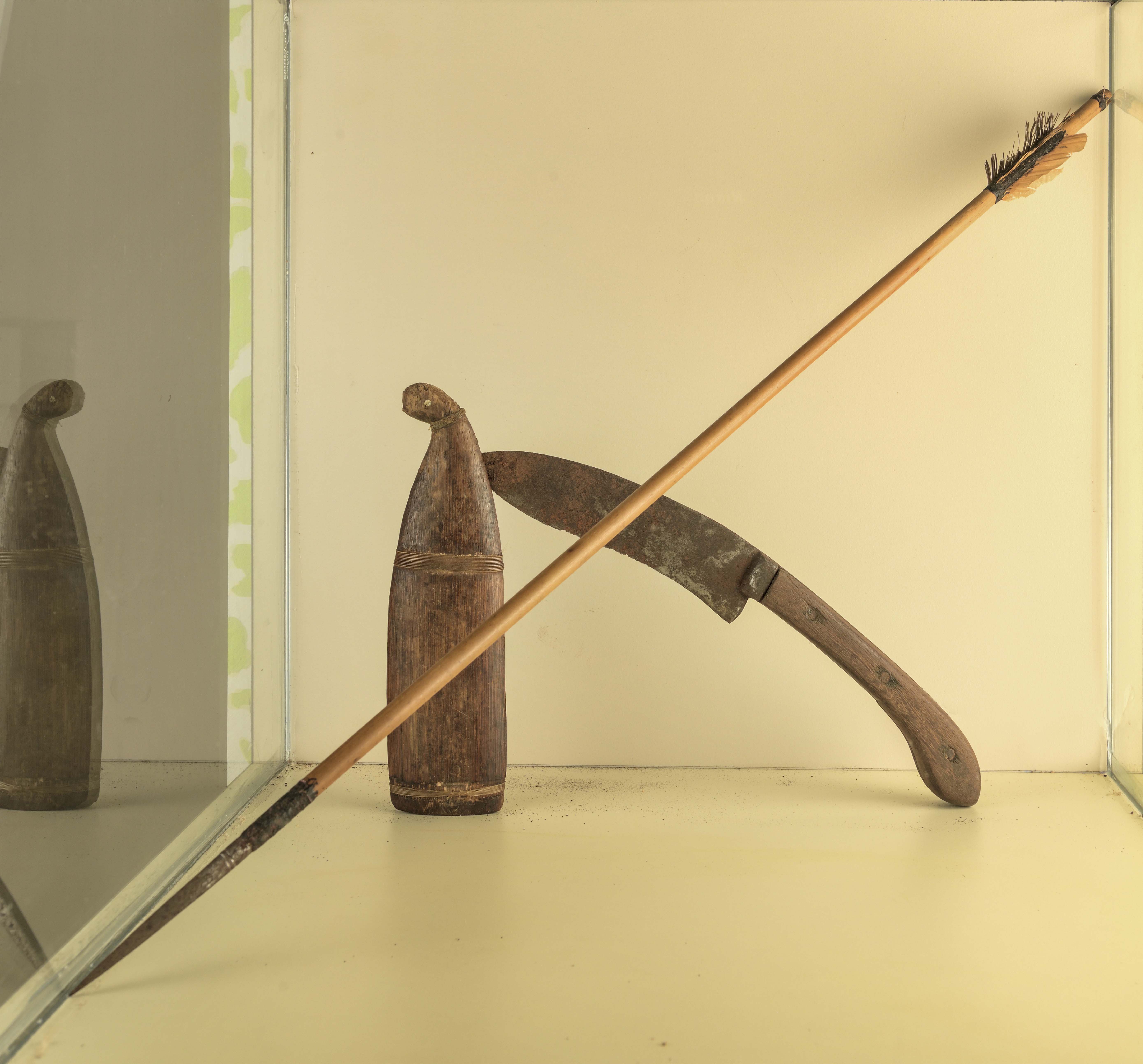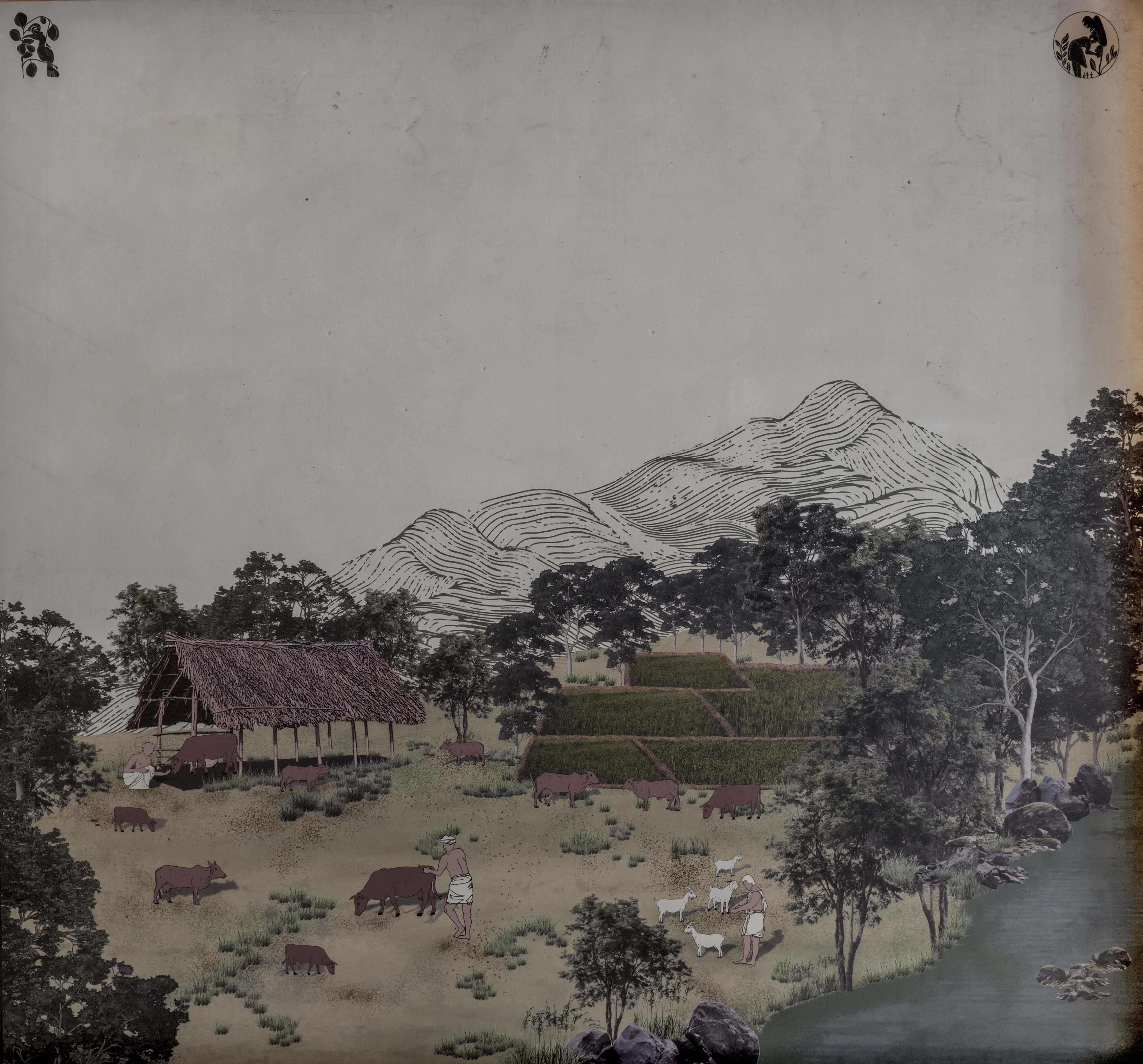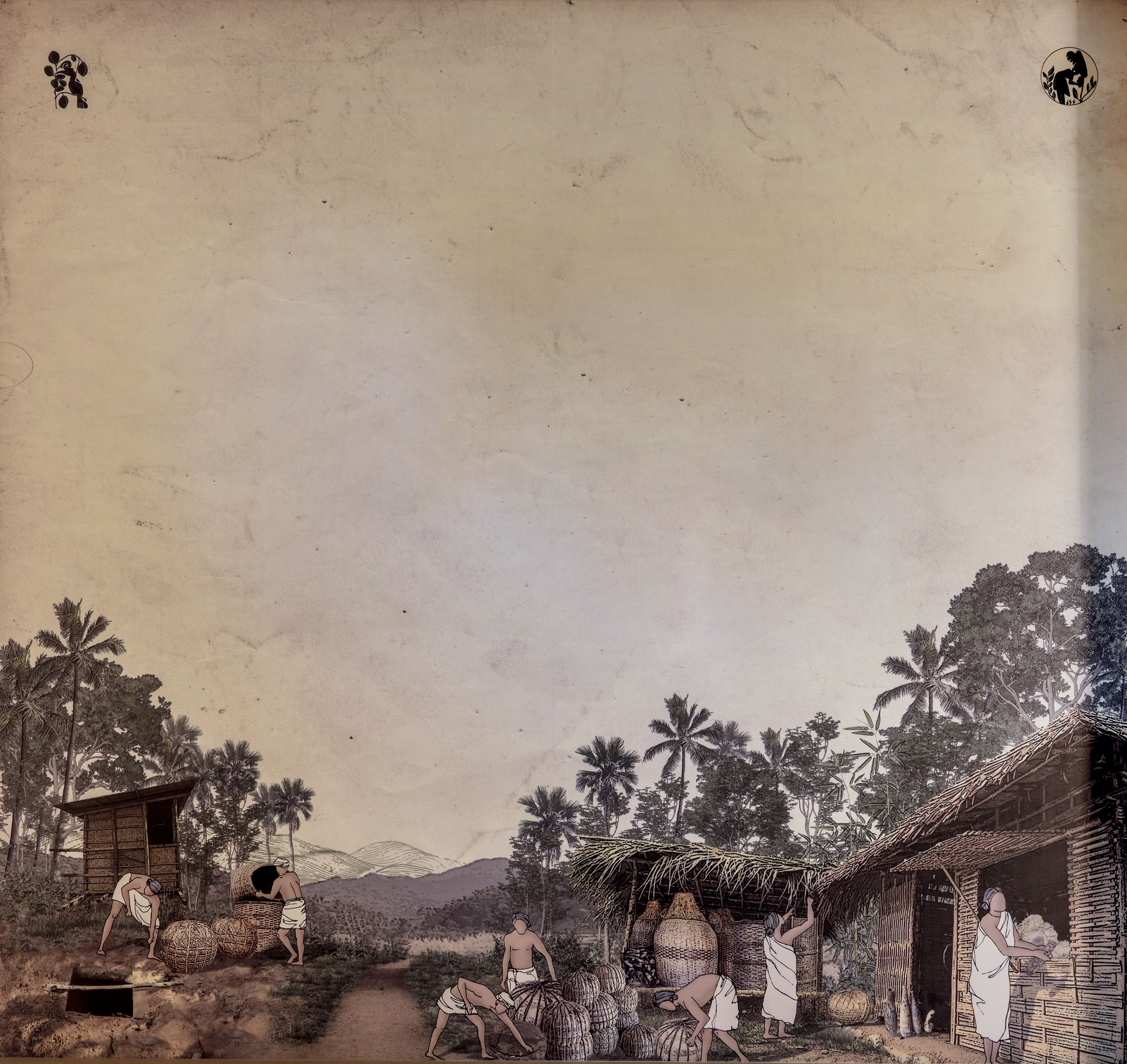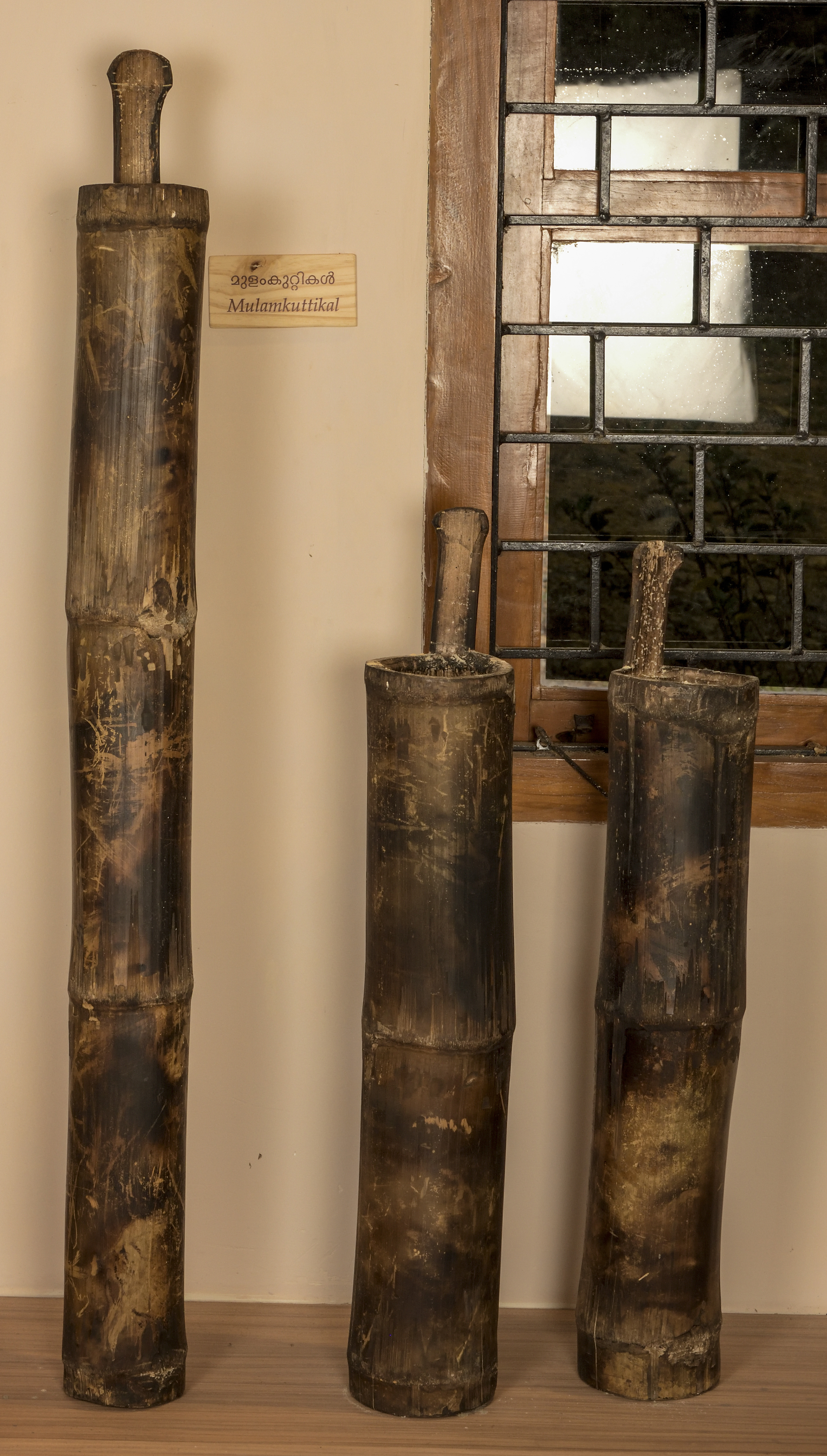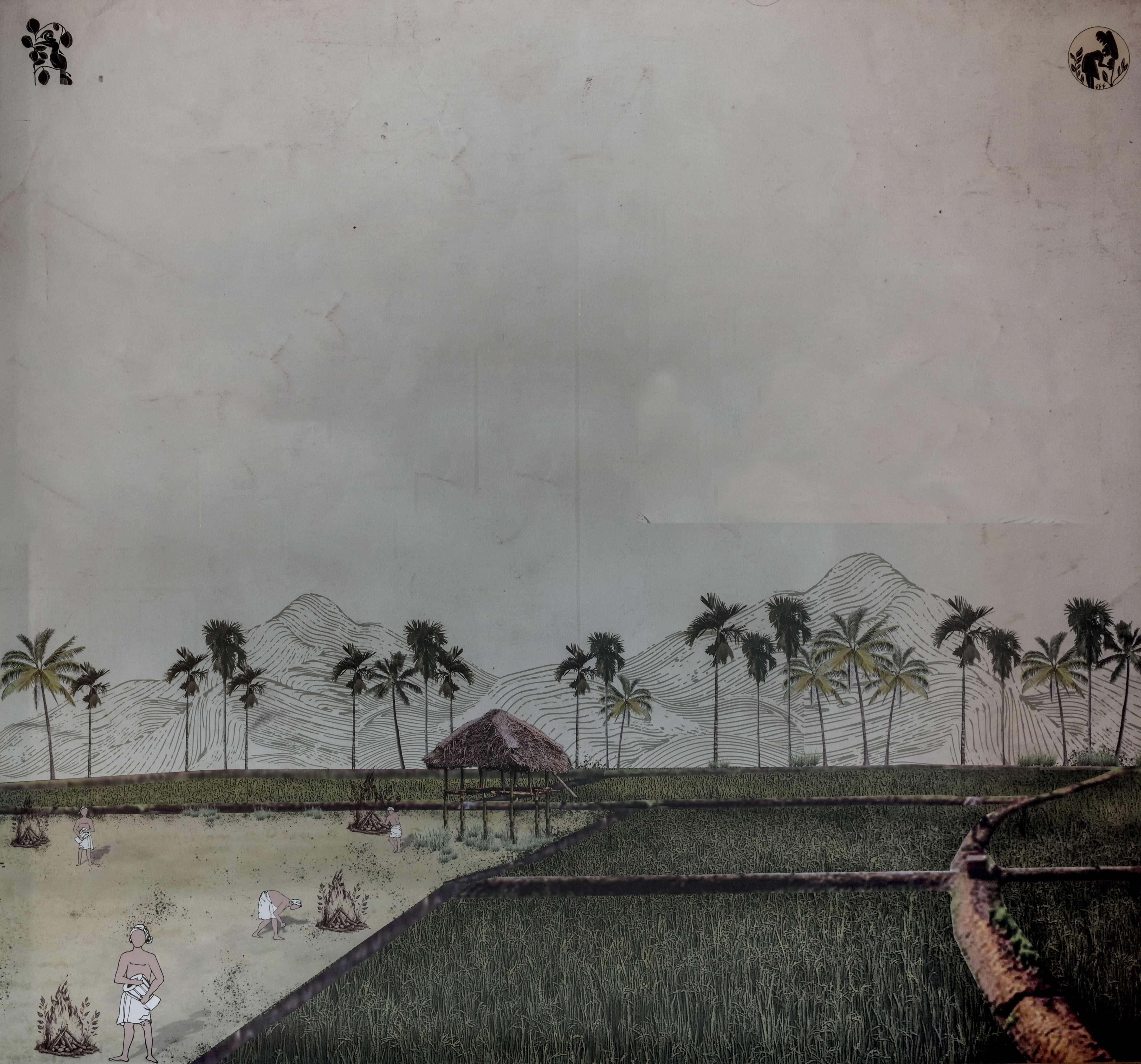- kunkichiramuseumwayanad@gmail.com
- Kunhome, Thondernad, Wayanad
Existence & Sustenance
Seasonal Changes in the Paddy fields of Wayanad
Calender of Tribal Agriculture Communities
Farming Practices of Kurichyar
It all begins with preparing the field for cultivation, A specific part of forest is cleared in the Malayalam month ‘Kumbham’, the cleared dried forest is burnt which over a period of time turns to ash which is a good fertilizer. It is left to dry for a period of one month. The field is then cleaned with a spade and the seeds are sown before Vishu. After sowing, they are sprinkled with soil using ‘Perkkukka’. It must be noted that the first weeding is to remove all the weeds and bushes before the rains. A second weeding is done at the time as paddy. Rice varieties such as Palthondi, Kottathondi, Marathondi, Chomala, Kutivelian, Maranellu, Gandakashala and Jeerakashala are grown by Kurichyar.
Collection of Honey
A group of Kattunayikkar popularly known as ‘Thenkurumar’ are ingenious experts in collecting honey. They are adept at finding honey combs by looking in the direction of files nested in the tree trunka, branches and molehills (termitarium) of the forest. Once the hives are identified on the branches, mostly on the Malabar-silk cotton trees ‘Bombax ceiba’, they are monitored daily. By studying the size and shape of the hanging hives they determine whether the honey is ripe for harvesting. Then honey is collected by climbing the wild tress with either a bamboo ladder or by hitting pieces of bamboo on the tree to form a ladder and then ascend to climb the tree to collect honey.
Collection of Forest Resources
The Tribal people who belong to the category of Thachanadan Muppan and Kattunayikkar are traditionally experts in making kutta, muram and panampaya. Fibers and canes are collected and manufactured in forest areas. All the tribal groups of Wayanad make the materials and traps used for agricultural purposes in this way.
Fishing
Tribal People are proficiently skilful at fishing. They catch fish either single headedly or in groups from streams, rivers and fields. Fishing is done through various methods by using fish nets, mixing poison and tying cloths. They have mastered the art of luring fish by flashing the light during the night and slicing them with a knife. The tribal women of paniya group are known to catch fish from the river with their bare hands. Fish are also caught using different types of bows.
Hunting
Rearing of Animals
Hunting is the main source of livelihood of the tribal communities. The tribal groups of Wayanad like the Kurichiyar and Kurumar are expert hunters. They use different weapons and methods to catch their prey. They use different types of arrows and traps for hunting. The animal is sedated and an arrow knife is pierced into the body of the animals. They store their bows and arrow in quiver called ‘Ambumthalla’. When the Kurichyar go hunting, they are well equipped with a knife always kept in a sheath made of layers of bamboo and covered with animal skin.
Along with agriculture, cattle rearing is also practiced among the tribals of Wayanad. They rear cows, goats and chickens. Dogs and cats also domesticated. Dogs often accompany their owners to the forest to gather resource.
Storage of Seeds
For the tribals seeds are treated with great reverence and they ensure they are passed on to the future generations. So storing seeds are a vital part. A few of the indigenous method are to store the seeds in trays made of bamboo and gourd. Vegetables seeds, berry and chilli seeds are stored in bamboo containers. Another method is to store seeds inside the house with great precaution. They also cover the seeds by tying the banana spathes together. These covered seeds are stored away on a tall tree near the house or on top of the oven.
Pest Control
Every tribal group has developed extraordinary expertise in the Knowledge of pest control. Herbicides are used to control pests such as leaf hoppers. By applying warm ash and crushing the tuber of the wild arrowroot plant insects are kept at bay. There are few tribals who perform spells and rituals and rituals to ward off insects
Protection from Wild Animals
Wild animals often pose a problem by entering the fields and damaging the crop, as it is easy access from the forest. The tribals have developed practical strategies and tools to keep them at bay without harming them. Some of them included sitting at the guard posts, banging bamboo drums and setting fire to the edge of the farmland to keep the animals away. Another practice is to grow plants that are stained and itchy when one comes in contact with it, along the edge of the farmland.


